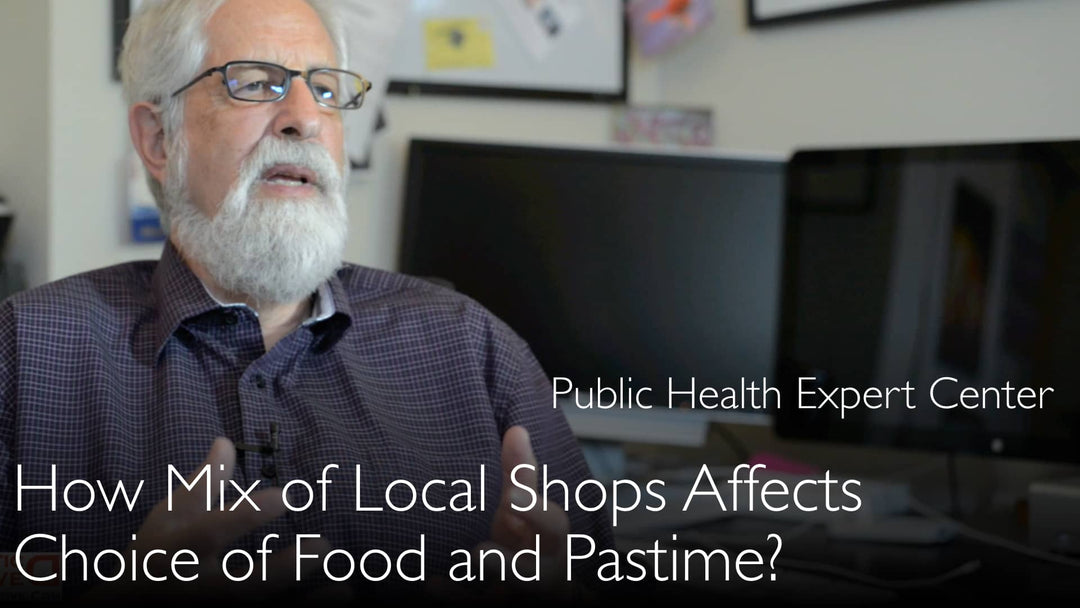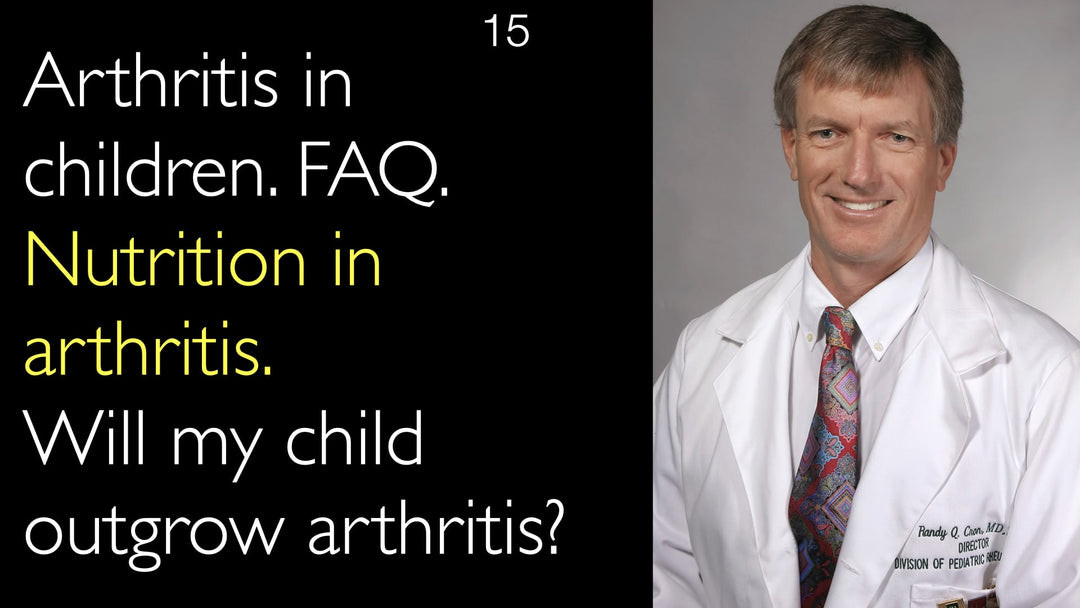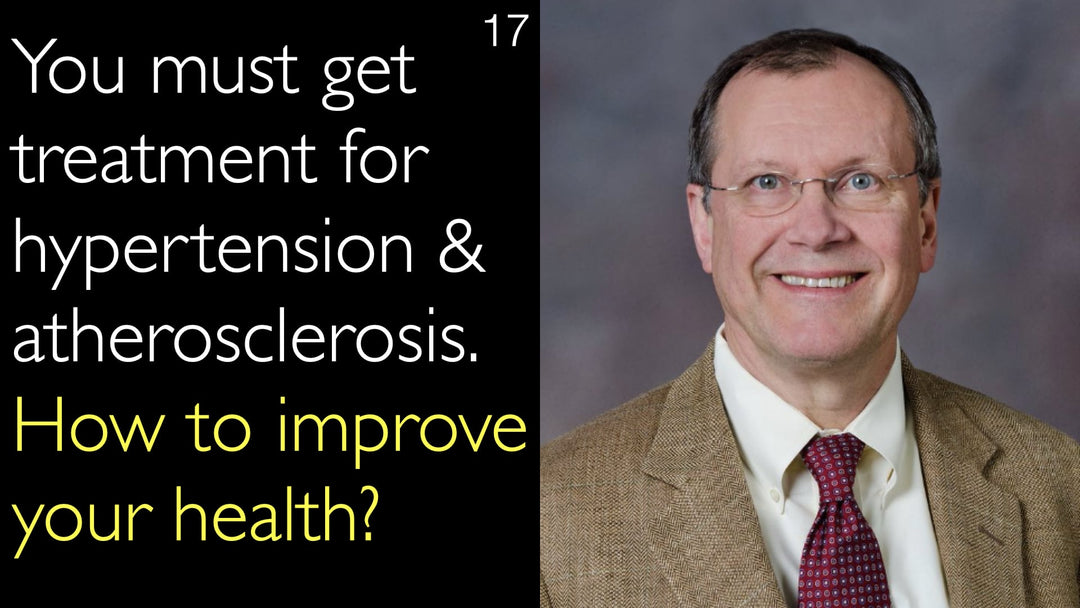Leading expert in social determinants of health, Dr. George Kaplan, MD, explains how local food environments heavily influence dietary choices and chronic disease risk. Low-income neighborhoods face a severe disparity in food access, with far more convenience stores and fast-food outlets than supermarkets, creating an environment that promotes the consumption of high-sugar, high-salt, and high-fat processed foods. Dr. Kaplan clarifies that this is a complex issue involving both corporate marketing strategies that target specific socioeconomic groups and the limited choices available to residents. These dietary patterns become ingrained norms passed through generations, but Dr. George Kaplan, MD, emphasizes they are not permanent and can be changed through improved access to information and healthier food options.
How Local Food Environments Drive Dietary Choices and Heart Disease Risk
Jump To Section
- Food Environment Disparities in Low-Income Areas
- Corporate Marketing Influence on Food Choices
- Generational Dietary Patterns and Norms
- Historical Shifts in Health Behavior
- Information Access and Disease Prevention
- Solutions for Improving Food Access
Food Environment Disparities in Low-Income Areas
Research cited by Dr. George Kaplan, MD, reveals stark disparities in local food environments. Low-income neighborhoods have over four times the number of small grocery stores and more than twice as many convenience stores compared to wealthier areas. Crucially, these same neighborhoods have only half the number of supermarkets, which are a more reliable and less expensive source of fresh fruits and vegetables.
This imbalance is particularly acute near schools. Dr. Kaplan's work shows that within walking distance of schools in lower-income neighborhoods, there are one-third more fast-food restaurants and 50% more convenience stores than near schools in higher-income neighborhoods. This creates a default environment where unhealthy, calorie-dense processed foods are the most accessible option.
Corporate Marketing Influence on Food Choices
The conversation with Dr. Anton Titov, MD, explores whether patient choices drive the market or if corporate decisions shape behavior. Dr. George Kaplan, MD, confirms it is a complicated, bidirectional relationship. While patients make choices, those choices are severely conditioned by the options available to them.
Dr. George Kaplan, MD, states there is "differential marketing to different groups in society." This means corporate business strategies specifically exploit the limited choices in lower-income communities, aggressively promoting high-fat, high-sugar, and high-salt foods. This targeted marketing reinforces unhealthy eating patterns by making these products ubiquitous and appealing.
Generational Dietary Patterns and Norms
These conditioned choices often become hard-to-break norms passed from parent to child. Dr. George Kaplan, MD, explains that dietary patterns become the community standard, replicating over time. As long as there is not equal opportunity to access healthy foods, these patterns of consuming "bad things" will persist across generations.
Changing these norms requires more than just individual willpower. It necessitates a fundamental shift in the local environment and the economic structures that make unhealthy food the path of least resistance for families struggling with time and financial constraints.
Historical Shifts in Health Behavior
Dr. George Kaplan, MD, provides crucial historical context, noting that patterns of exposure related to advertising and availability are not set in stone. He points out that in Western countries, high-fat diets and cigarette smoking were once more common among the wealthy. This changed as information about the dangers of smoking filtered through society.
This historical perspective is vital. It demonstrates that population-level health behaviors can and do shift dramatically over time. The current concentration of unhealthy food consumption in lower-income communities is a recent phenomenon, not an inevitable outcome, suggesting it can be reversed with the right policies and interventions.
Information Access and Disease Prevention
The diffusion of health information plays a critical role in disease prevention. Dr. George Kaplan, MD, observes that knowledge about protective health factors "usually starts among the most educated." This is why wealthier, more educated patients were earlier adopters of smoking cessation.
The delayed access to credible nutritional information in disadvantaged communities compounds the problem of physical food access. Combating heart disease, which Dr. Anton Titov, MD, notes is often "communicated via food," requires ensuring that knowledge about the dangers of processed foods and the benefits of whole foods reaches all segments of society equitably and quickly.
Solutions for Improving Food Access
Addressing this public health crisis requires multi-faceted solutions. Dr. George Kaplan, MD, implies that change is possible by highlighting the non-permanent nature of these patterns. Interventions can include policy changes like zoning laws to limit new fast-food outlets, economic incentives to attract supermarkets to food deserts, and nutrition education programs.
Community-based initiatives, such as supporting local farmers' markets and urban gardening projects, can also increase access to fresh produce. The goal is to create an equal-opportunity food environment where healthy choices are the easy, affordable, and default option for every family, regardless of their socioeconomic status or zip code.
Full Transcript
Dr. George Kaplan, MD: There is a saying: heart disease is an infection that is communicated via food. It refers to the likely cause-and-effect link between high sugar, high salt, and high-fat content of modern processed food—as I mentioned, very dense foods that have a lot of calories.
Dr. Anton Titov, MD: You are right. Let me quote from your research: in one study, low-income neighborhoods had more than four times the number of small grocery stores and more than twice as many convenience stores, but half the number of supermarkets—a more reliable and less expensive source of fresh fruit and vegetables—than small grocery stores.
Similarly, within walking distance of schools in lower-income neighborhoods, there are one-third more fast-food restaurants and 50% more convenience stores than near schools in higher-income neighborhoods.
Does the market follow such individual choices of patients from lower socioeconomic backgrounds? Or is it the other way around—the corporate business choices that heavily influence patients' behavior?
Is there anything that can be done about it?
Dr. George Kaplan, MD: It is a complicated issue. There is no question that patients make choices, and those choices are conditioned upon the choices that they have. But there is also no question that there is differential marketing to different groups in society.
This exploits the particular choices they have; those choices are passed on from generation to generation, from parent to child. They become the norm, and those norms are hard to break.
As long as it is not an equal-opportunity world in terms of getting access to good things, those bad things and those patterns of use of bad things will replicate over time.
It is worth remembering that in Western countries, high-fat diet and cigarette smoking used to be more common among the wealthy.
What we have to understand is that these patterns of behavior we see are conditional upon a particular time. We are talking about patterns of exposure that are related to advertising and availability; they change over time and are not set in stone.
We also have to remember that information about good things—the things that protect you—filters down through society. It usually starts among the most educated.
That is why better-off patients, more educated patients, were earlier in quitting smoking. The information filters down, as well as the availability of bad things bubbling up from the bottom.







